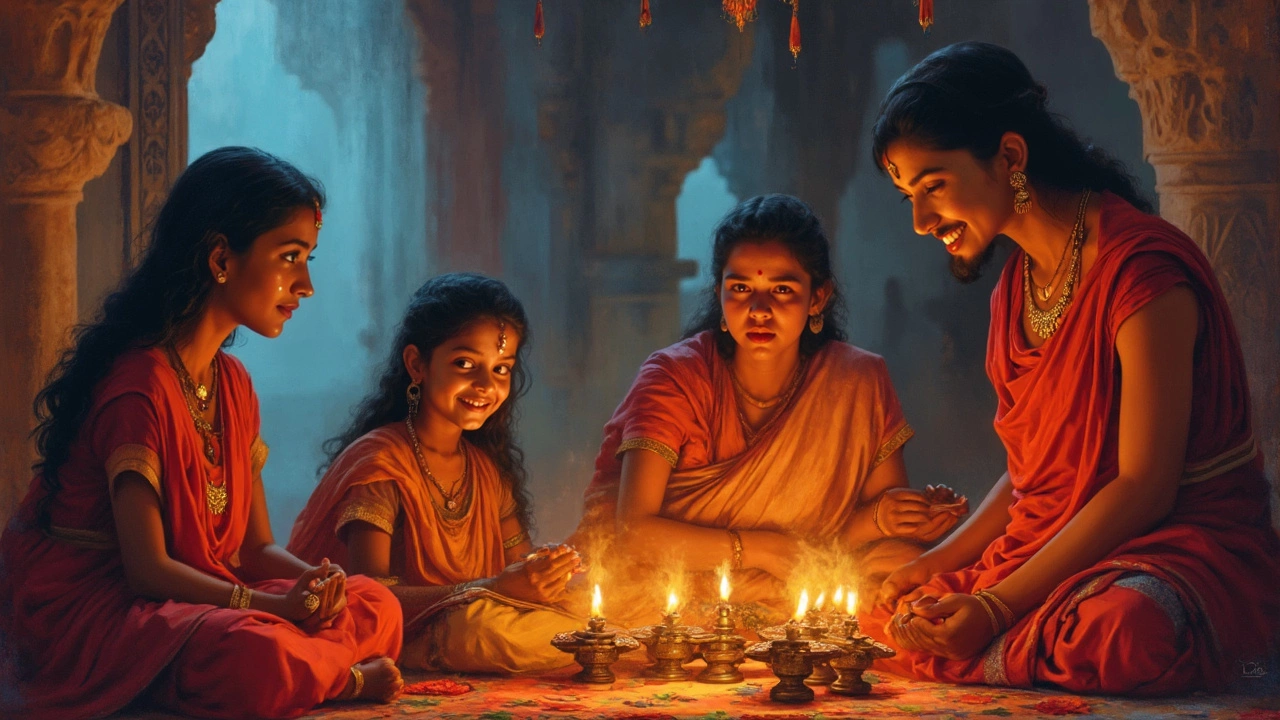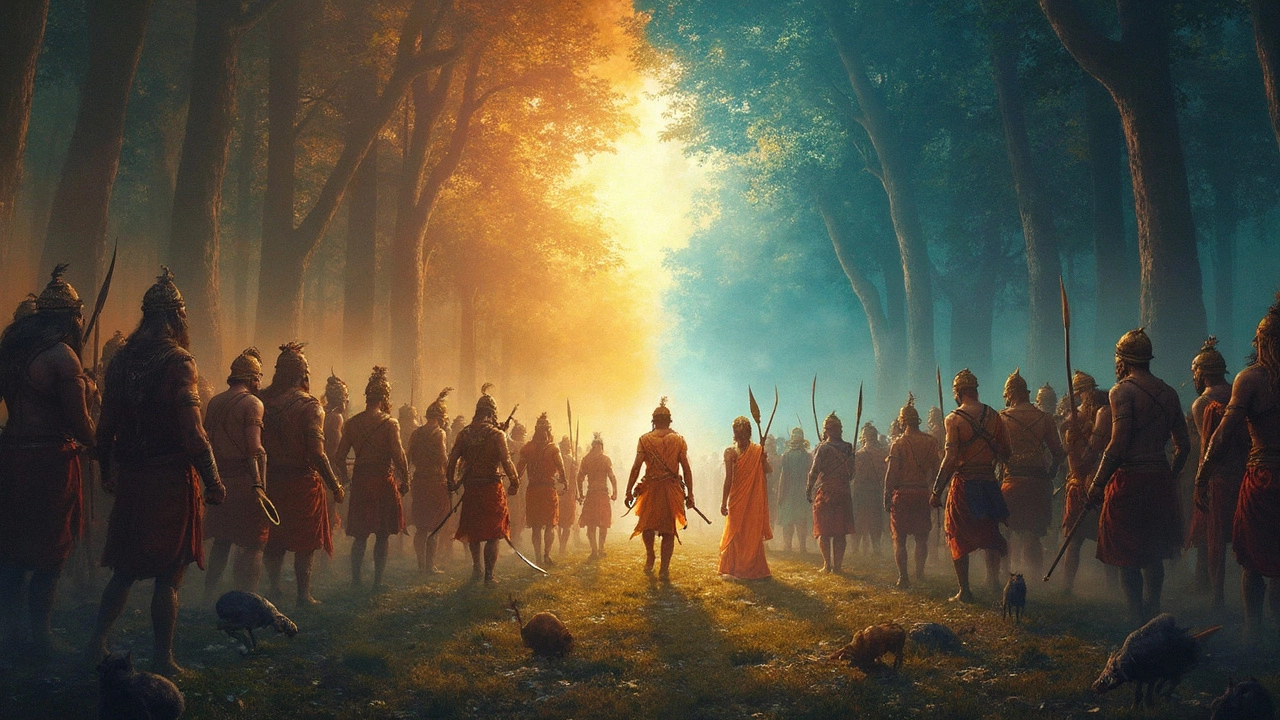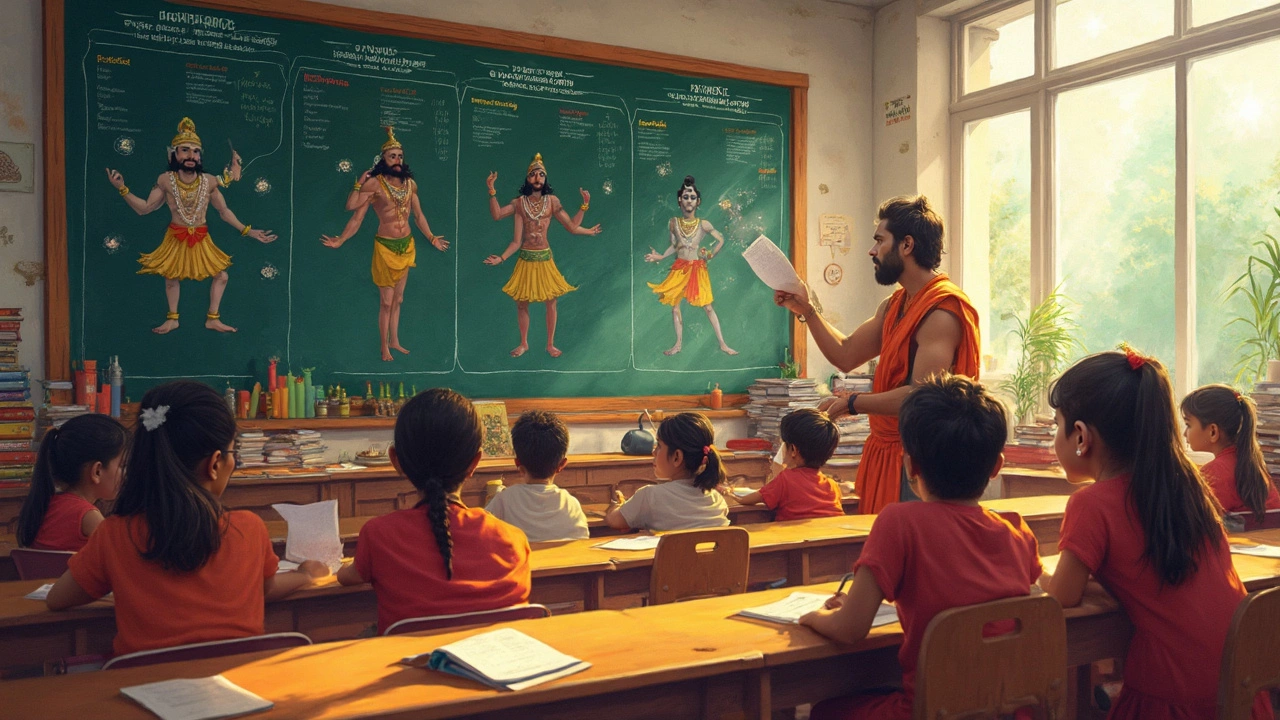The Oldest Indian Epic Poems: Mahabharata and Ramayana Explained

If you’ve ever wondered what’s at the heart of India’s storytelling tradition, it all comes down to two epic poems—the Mahabharata and the Ramayana. These aren’t just any old stories. They shaped India’s culture, language, and even everyday values. People still quote parts of these poems in daily conversations, and you’ll spot their themes in Indian movies, TV, and comics.
The cool part? Both epics aren’t just big in India. They’ve inspired art and stories across Southeast Asia too. Even if you’re not a history buff, knowing what these poems are about gives you instant cred in understanding Indian culture. Ready to break them down without wading through endless pages? Let’s get right into it.
- Meet the Giants: What Are the Two Oldest Indian Epics?
- Stories That Shaped a Nation
- Spotlight on Mahabharata: More Than a War Story
- Ramayana: Adventure, Exile, and Ideals
- Tips for Exploring These Epics Today
Meet the Giants: What Are the Two Oldest Indian Epics?
The two oldest Indian epics—the Mahabharata and the Ramayana—aren't just books gathering dust on a shelf. They set the bar for story-telling in India and have stuck around for thousands of years. These poems aren’t short, either. The Mahabharata alone clocks in at about 1.8 million words, making it way bigger than the Iliad and Odyssey combined.
The Mahabharata is believed to have been written sometime between 400 BCE and 400 CE, while the Ramayana’s main version probably dates to around 500 BCE to 100 BCE. That’s older than a lot of popular world literature. And scholars say they started out as oral stories, passed down for generations before being written.
Both epics mix in everything—adventure, family drama, politics, love, and major battles. What’s wild is how you’ll see these stories pop up everywhere in Indian culture. From Diwali celebrations to comic books and TV serials, references to these epics are everywhere.
"The Mahabharata and Ramayana are not just stories; they frame the Indian way of life and thinking," said Dr. Wendy Doniger, a well-known scholar of Hindu texts.
Here’s a quick comparison to show their epic scale:
| Epic Name | Estimated Verses | Approximate Age (Years Old) |
|---|---|---|
| Mahabharata | 100,000+ | ~2000-2500 |
| Ramayana | 24,000+ | ~2100-2500 |
You don’t have to read the whole thing to get the gist, though. Even picking up summaries or watching adaptations can get you started on why these oldest Indian epics matter. Next, we’ll check out their stories and see how they became the backbone of so much Indian culture.
Stories That Shaped a Nation
The Mahabharata and Ramayana aren't just old books—they're the backbone of Indian culture. Both were originally passed down by word of mouth for hundreds of years before anyone wrote them down. The Mahabharata is thought to have been finished around 400 BCE, while the Ramayana probably took shape a bit earlier, maybe as far back as 500 BCE. Their stories touch on family, duty, loyalty, and how to deal with big moral decisions—things people everywhere face, even today.
People don’t just read these poems; they live them. In north India, annual festivals replay scenes from the Ramayana with huge public performances. The Mahabharata’s famous Bhagavad Gita, which takes place right before a massive battle, is considered a go-to guide for life advice. Fun fact: the Mahabharata is so huge—nearly 100,000 verses—it’s about seven times longer than the combined length of the Iliad and Odyssey from ancient Greece!
Check out some cool ways these oldest Indian epics influence daily life:
- Kid-friendly versions are common in Indian comic books and TV cartoons.
- Most Indian languages have their own take or translation of these stories.
- Names from both epics, like Arjun or Sita, are still super popular for kids today.
Even politics and law have roots in lessons from these epics. The idea of choosing duty over personal gain—the big message from the Bhagavad Gita—gets brought up in government and classrooms all the time. So if you ever wondered why these stories matter, it’s because they’re everywhere, not just in books but all over daily life across India and way beyond.

Spotlight on Mahabharata: More Than a War Story
Everyone hears about the Mahabharata as the longest epic ever, and that’s true—it clocks in at over 100,000 couplets, which makes it about seven times the combined length of the Ramayana and the Iliad together. But this oldest Indian epic isn’t just an ancient battle tale. Sure, the Kurukshetra War is what most people remember, but the real action is in the stories about family, friendship, betrayal, and making choices when every option stinks.
The Mahabharata gives you the famous showdown between the Kauravas and the Pandavas, two groups of cousins fighting for the throne. But it’s not just swords and arrows—there’s a huge focus on what’s right versus what’s easy. The character of Arjuna, for example, freezes before the battle, torn about fighting his own family. This moment kicks off the Bhagavad Gita, a must-read chapter that even gets referenced today by CEOs and sports coaches for its talk on duty, focus, and doing the right thing under stress.
What’s wild is this epic covers everything. There are lessons on politics, philosophy, family drama, and even how to behave as a leader or a sibling. You also get side stories: think ancient fables about loyalty, greed, and clever tricks. Because it’s been retold for centuries, you’ll spot all sorts of local versions and adaptations—comics, cartoons, and even modern TV epics that get millions of viewers. There’s something relatable for everyone, from folks into action-packed narratives to people looking for life advice.
- The Mahabharata’s author is said to be Vyasa, a legendary sage in Indian tradition.
- It introduces iconic characters—Arjuna, Draupadi, Karna, Krishna—each with their own fan base even today.
- It’s written in Sanskrit, but you’ll find English translations and versions in almost every Indian language.
- Schools in India still use Mahabharata stories to explain moral and ethical questions.
Check out this quick breakdown to put the Mahabharata’s size in perspective:
| Epic Name | Approximate Length (Verses) |
|---|---|
| Mahabharata | 100,000+ |
| Ramayana | 24,000 |
| Homer's Iliad | 15,693 |
| Homer's Odyssey | 12,110 |
If you want to dig in but don’t have months to spare, try the Bhagavad Gita first—it gives you the core ideas in a fraction of the time. Or check out graphic novel versions for an easy start. Either way, cracking open the Mahabharata is basically opening a window into how people thought, worried, and hoped, thousands of years ago.
Ramayana: Adventure, Exile, and Ideals
The Ramayana isn’t just famous in India. It’s all over Southeast Asia—think Thailand, Indonesia, and Cambodia. At its core, the Ramayana is the story of Prince Rama, his wife Sita, and his loyal brother Lakshmana. When Rama is sent into exile for 14 years because of a promise his dad made, the action kicks into high gear. There’s kidnapping, monkey armies, and even flying demons.
The entire story is built around some big-time ideas: doing the right thing, keeping promises, and respecting family. People look at Rama as the perfect guy—respectful to parents, loyal to friends, and totally honest. Sita, his wife, stands for loyalty and strength, even when things get tough. The villain, Ravana, is more than just a bad guy; he’s smart but lets his ego and wants mess everything up.
The Ramayana is split into seven parts, or kandas. Each kanda covers a different chunk of the story, starting with Rama’s birth and ending with his return home. The big highlights? Sita’s kidnapping, the building of a bridge to Lanka, and that crazy battle where Rama takes on Ravana. Sound familiar? If you’ve watched kids’ cartoons or Bollywood movies, you’ve probably seen these scenes without realizing it.
Scholars believe the original Ramayana was written by the poet Valmiki in Sanskrit around the 5th century BCE, but it’s been retold a million different ways since then—in Tamil, Hindi, and even in comics. The story keeps morphing to fit the times but stays true to its core themes.
Here’s a quick breakdown of the cast:
- Rama: The hero, always doing what’s right, even when it hurts.
- Sita: Strong and patient, even in the face of serious trouble.
- Hanuman: The monkey god, famous for loyalty and super strength.
- Ravana: The super-smart but arrogant king who kidnaps Sita.
- Lakshmana: Rama’s younger brother, always by his side.
The impact of the Ramayana goes beyond just being a cool story. School kids in India often study parts of it—and learn lessons about honesty, teamwork, and keeping your promises. During the festival of Dussehra, you’ll see massive statues of Ravana getting set on fire as a symbol of good beating evil. No wonder this epic is still part of daily life.
| Fact | Detail |
|---|---|
| Verses in Ramayana | About 24,000 |
| Major languages it’s been translated into | Over 20 |
| Main cities featured | Ayodhya, Lanka |
If you ever want to start reading the Ramayana, look for a modern translation or a comic book version—it’ll save you time and keep things clear. Even just knowing the main story helps you connect with a big part of Indian culture and see where a lot of pop culture ideas come from.

Tips for Exploring These Epics Today
Diving into the oldest Indian epics doesn’t have to be intimidating. You don’t need to wade through 100,000 verses in Sanskrit to get the core stories or life lessons. Here are ways to make reading or watching the Mahabharata and Ramayana way more practical and fun:
- Start with summaries. You can find reliable breakdowns online, like at the Ramakrishna Mission or Amar Chitra Katha comics, which condense the major events without watering down details.
- Try audio or video adaptations. Streaming sites like YouTube have classic TV series and newer animated movies that summarize the major adventures, making the stories easier to follow than flipping through ancient texts.
- Read modern translations. Authors like R.K. Narayan and Devdutt Pattanaik have put out easier, fresh takes (and translations) of both epics that don’t come off as lectures.
- Look for kids’ versions if you’re short on time or want to spark curiosity in younger folks. Even adults find these versions helpful to get the gist fast.
- If you love details, check out annotated editions. Some books explain cultural references, tell you about key places, and even answer common questions in the footnotes.
Here’s a neat fact: the Mahabharata is believed to be about 15 times the length of the Bible and 7 times longer than the Iliad and Odyssey combined. And, the Ramayana has over 24,000 verses. No one expects you to get through all that in a weekend, so don’t stress.
Lots of schools in India now offer classes or workshops where you can discuss the stories with others, which makes it easier to spot the relevance—like why people still talk about “dharma” after all these years. If you’re ever in a big Indian city, keep an eye out for epic-inspired plays and festivals, like Ramlila, where entire communities act out the Ramayana every year. Seeing it live adds a whole new layer to the experience.
Pro tip: If you’re interested in how these epics have influenced culture outside India, search for performances in countries like Indonesia and Thailand—they have their own versions and unique spins on the same stories.
| Epic | Estimated Verses | Popular Adaptations |
|---|---|---|
| Mahabharata | ~100,000 | BR Chopra TV series, Peter Brook’s stage adaptation |
| Ramayana | ~24,000 | Ramanand Sagar’s TV series, modern graphic novels |
Tackle these Indian poetry classics at your own pace, and don’t hesitate to jump between versions or formats. The point is to enjoy the ride and see why people still talk about these stories centuries later.